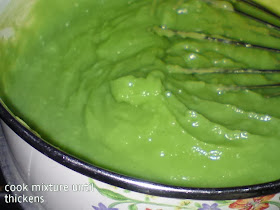One of the popular Nyonya style curries with slightly different ingredients for the similar kind of curry. Some recipes do not add shrimp paste [belacan] to the spices.
Very strong flavour, spicy curry with various vegetables. Good serving it with plain rice. Sometimes, I love to spread the hot curry over blanched instant noodles. Wow!, reminds me of my working days in KL when my aunt used to prepare it for me. One point to note - taste before adding salt cos' the salted fish bones and some types of belacan or shrimp paste may be rather salty.
Very strong flavour, spicy curry with various vegetables. Good serving it with plain rice. Sometimes, I love to spread the hot curry over blanched instant noodles. Wow!, reminds me of my working days in KL when my aunt used to prepare it for me. One point to note - taste before adding salt cos' the salted fish bones and some types of belacan or shrimp paste may be rather salty.
Ingredients
[original recipe from Nyonya Flavours with slight modifications]
Curry Paste Ingredients [blended and mix with other paste ingredients]
1 tsp white peppercorns
2 stalks lemongrass
100 gm [10-15] shallots
10 gm [2 pips] garlic
20 gm [15] dried chillies
20 gm shrimp paste/belacan
2 tbsp coriander powder
1 tsp tumeric powder
2 tbsp coriander powder
1 tsp tumeric powder
3-4 pieces salted fish bones - rinsed and soaked for 5-10 minutes
200 gm long beans
1 long brinjals - cut 2x4 cm pieces
100 gm cabbage - optional
100 gm cabbage - optional
1 cup taufu puff/taupok - halved
200 gm small prawns - head and tail removed
100 ml coconut milk [I used milk]
750 ml water
salt and sugar to taste
100 ml oil
100 ml oil
- Heat oil in pan, saute salted fish bones for 1-2 minutes. Dish out.
- Using the same oil, add in curry paste. Fry until aromatic and oil separates.
- Add in long beans and brinjals. Stir fry to mix ingredients. Add in a little water for easier stirring of ingredients.
- Add in cabbage leaves [if using] and fried salted fish bones. Stir fry for a minute.
- Add in remaining water, bring to boil. When vegetables have softened, add in the prawns and taufoo puffs. Let curry boils for another 1-2 minutes.
- Add in seasoning to taste and lastly pour in coconut milk. Bring to boil again.
- Off heat, serve curry with plain white rice.
Notes: Visit this site for it's Nutritional Facts [here]

















































.jpg)